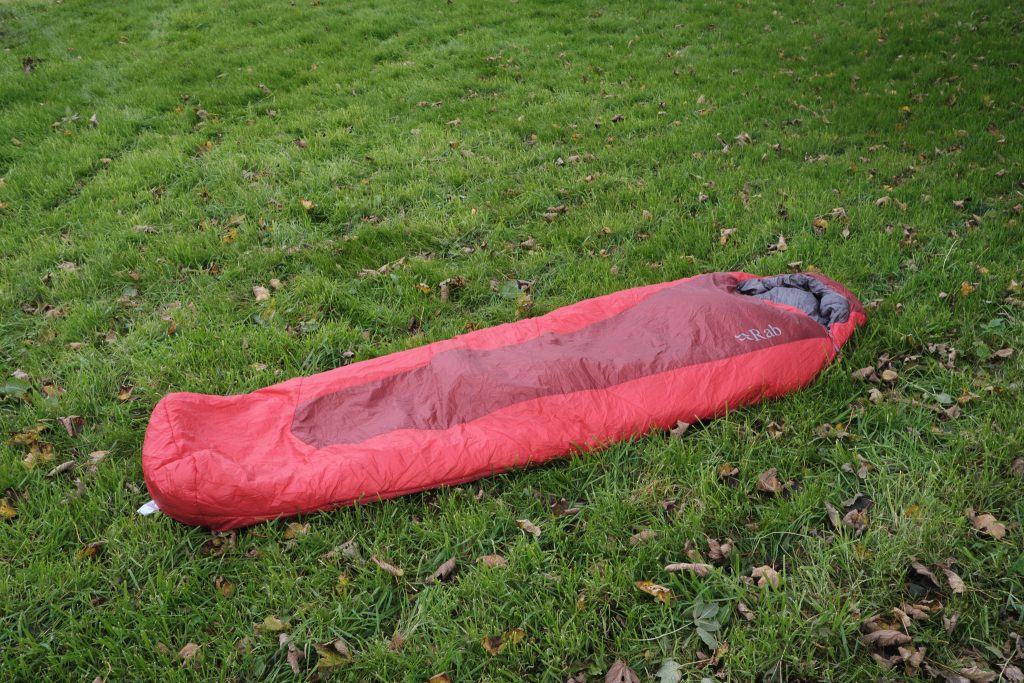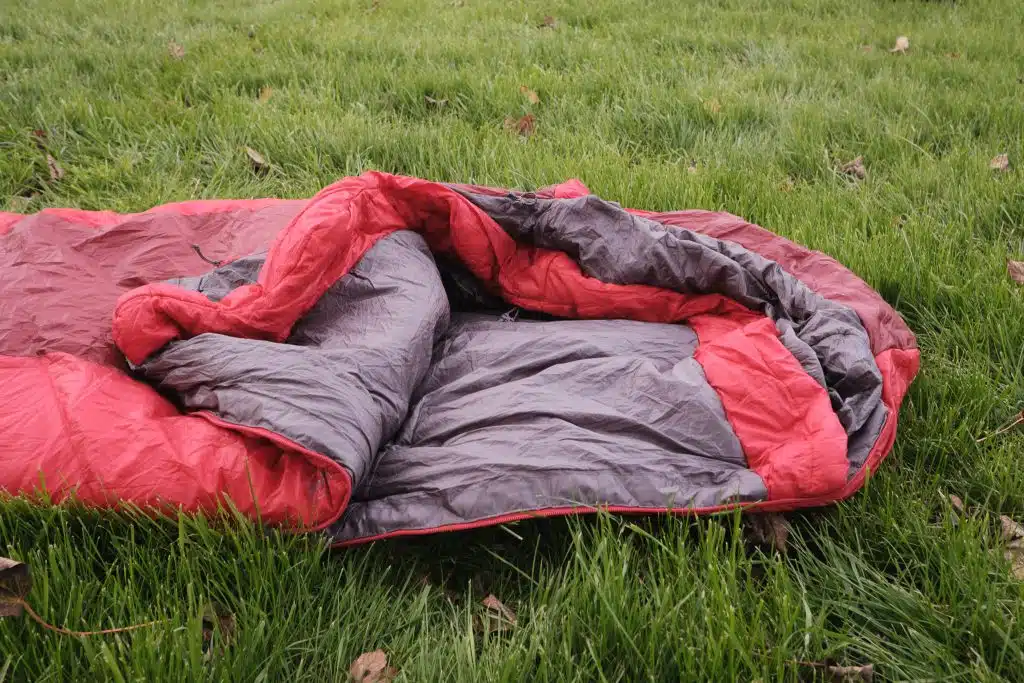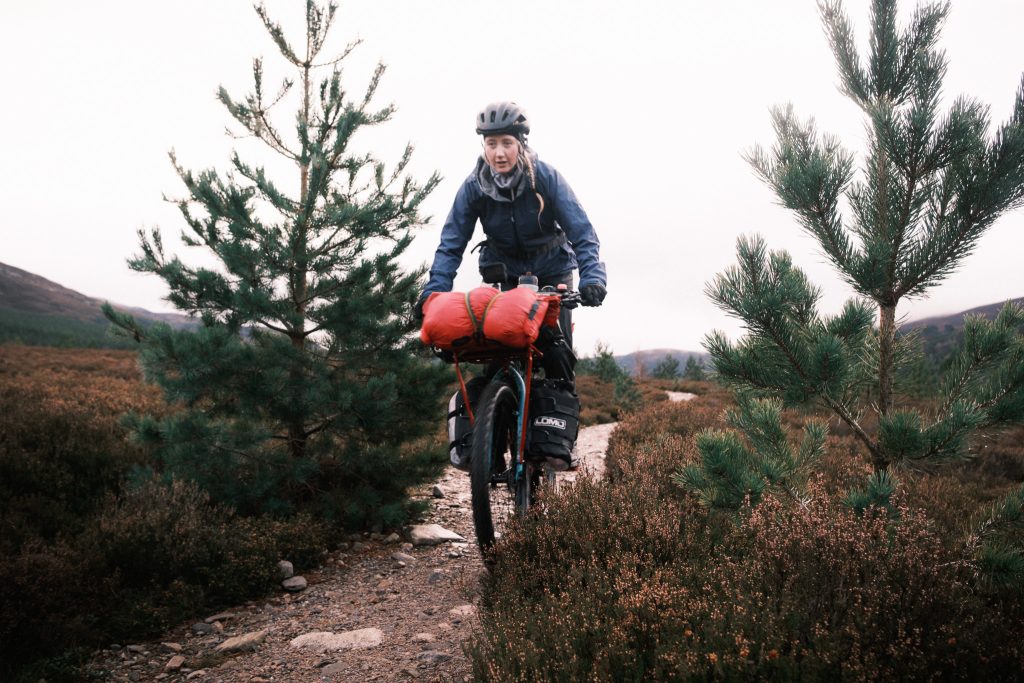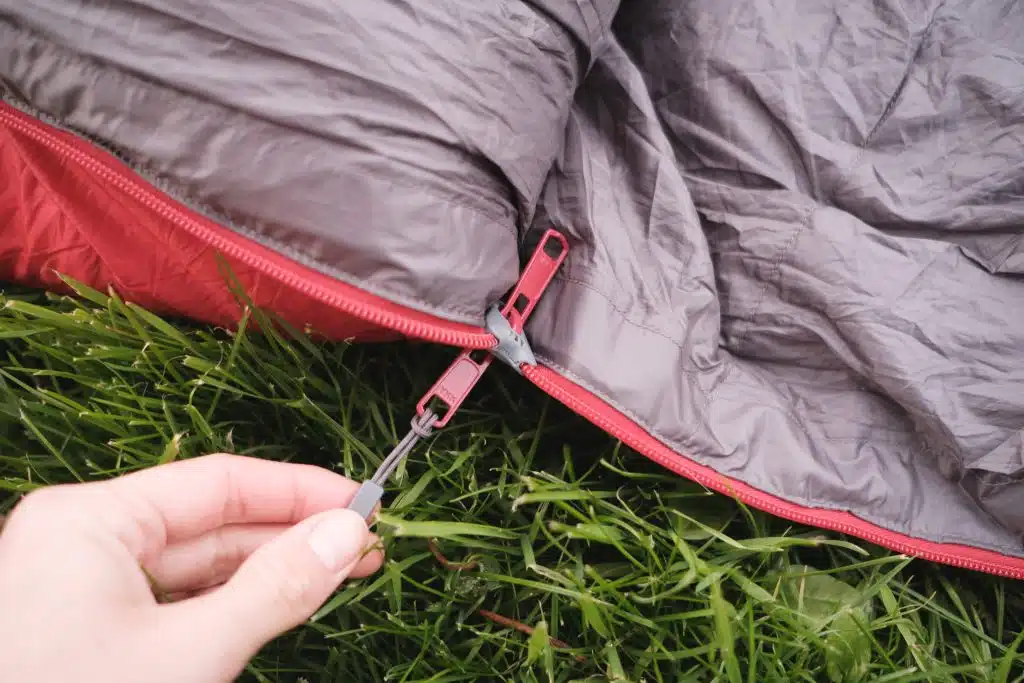Our Rab Solar Eco 3 sleeping bag review of this bag made of recycled materials faired in the wild
Rab has heralded their Solar Eco 3 sleeping bag as the ultimate three-season sleeping bag for bivvy and bothy adventures.
Made from 100% recycled materials and with features designed to lock in heat, this bag is made to keep conscious explorers warm through some chilly adventures.
Over 9 months, I’ve been putting this bag to the test on some wintery adventures to see how it held up in the wild.

Rab Solar Eco 3 Sleeping Bag in a Nutshell
- Weight: 1.235 kg / 44 oz
- Pack size: 40 x 22 cm / 15.7 x 8.7 inches
- Sleep limit: -8°C / 20F
- Insulation: Synthetic Stratus™ insulation made from 96% recycled materials
- Type: Mummy in a regular or wide
- Zip: ¾ length zip can be on the left or right side
What it Says on the Box
Rab says they’ve designed these sleeping bags to be hardwearing, warm, dependable and fast-drying.
Made with double-layer 100% recycled Stratus™ insulation arranged in a concertina. Then lined and covered with 20D recycled Atmos™ fabric with ripstop, designed to be tough and warm.
The internal quilting brings the insulation closer to the user along with the isolated quilting to hold the insulation in place. Trapping warm air to keep the user warm.
It’s designed to be the perfect three-season sleeping bag for climbing trips, mountain bivvies, and backpacking adventures.
How I Put the Rab Solar Eco 3 Sleeping Bag to the Test
I have been testing the Solar Eco 3 for over 9 months on bikepacking and backpacking trips. In tents and bothies in temperatures ranging from 10°C to – 4 °C, in the North of England and Scotland.
It’s been my primary sleeping bag strapped to the front of my bike and stuffed into a rucksack.
I’ve tested it bundled up in layers and also with minimal layers to put this sleeping bag to the test. Let’s see how it faired through some wet, windy, frosty and snowy nights.

Comfort
Having tried a few synthetic sleeping bags over the years, this is definitely one of the cosiest and plushes I’ve come across.
The Stratus™ synthetic insulation is double-layered feeling thick and snug. The concertina structure helps to lock in warm air and keeps the insulation in its place. After nearly 12 months of use, stuffing the bag into a dry bag on the bike daily on regular trips, the stuffing has stayed in place.
The adjustable hood also helps to keep you feeling snug enveloping your whole body in the fluffy insulation.
I’ve found the shell of the sleeping bag to feel silky and comfortable. It doesn’t feel sticky like some shells can on warmer nights.
The ¾ length zip helps to enclose you in on chilly nights and keep you warm. But also means the bag can be opened up on warmer nights to keep you feeling cool and comfortable. You can choose the side you want which is a big plus for some I know
Although the mummy design helps to lock in heat and pack down smaller, it does limit the sleeping positions you have available. I have the regular size and have found it’s not possible to have one leg bent and the other straight with the bag zipped up. Something to bear in mind if you like to adopt various poses as you snooze. It is available in regular and wide, so if you’re someone who likes to stretch out a wide fit may be better suited to you.
Warmth
I have used the Rab Solar Eco in temperatures ranging from 10°C to – 4 °C and I would say I’m someone who feels the cold when I sleep. I’ll often have on a couple more layers than J in the tent and still feel the chill.
There are lots of features that make this sleeping bag warm. The dual-layer concertina insulation is evenly distributed around the bag feeling cushioned all over. Along with the localised quilting to hold the insulation in place. Whilst the internal quilting helps to bring the lining closer to your body, helping reduce cold air pockets.
This, along with the cinched hood and adjustable neck baffle, means you can really feel like a big caterpillar cocooned in the bag. The zip also has a baffle along its length to exclude any cold air from seeping it.
I have found it is pretty good and locking in heat and after about 30 minutes of being zipped up you can feel your body heat being trapped in and keeping you warm. (You’re just screwed if you need to pee, as you know all that heat will escape).
Rab says this bag can be used as low as -8°C (20F). I have found I do feel the old below -3°C and wouldn’t use it lower than this. As I said I think I am someone who feels the cold more than your average but I think any lower than this wouldn’t be comfortable for me.


Keep Exploring…
Rab Cirrus Alpine Insulated Jacket Review
Picking the Best 2-Person Tent – Comparison + Buyer’s Guide
Rab Women’s Downpour Plus Jacket Review
Eco-Friendly Waterproof Trousers – Rab Downpour Eco Waterproof Pants Review
Weather Resistance
The outer shell fabric is made from recycled polyester ripstop fabric with fluorocarbon-free DWR (durable water repellent). Meaning you don’t have to sacrifice the weather-resistant capabilities of your bag at the expense of the planet.
Any condensation beads off it well, so this bag lends itself to tent, bivvy or tarp camping easily.
As it’s made from synthetic insulation rather than down, it dries easily and quickly in comparison. Inevitably, camping in varied climates and on longer trips your bag will get wet to some degree. The DWR and synthetic insulation mean it dries quickly and won’t affect the stuffing for when it’s time to bed down.
Packability & Weight
Weighing in at 1.235 kg / 44 oz the Rab Solar sleeping bag is about average for a 3-season synthetic sleeping bag.
Synthetic insulation is heavier than its down counterpart and doesn’t back down as well either. The pack size measures 40 x 22 cm / 15.7 x 8.7 inches, which is pretty large. I have found it squashes a little better than other 3-season sleeping bags I’ve tried and it’s smaller than some.
I can get this sleeping bag in a 20L dry bag easily and it compresses well enough to be attached to my bike. It does take up a large portion of my 40L rucksack so isn’t ideal for lightweight backpacking trips.


Durability
I have been using this recycled sleeping bag over a period of 9 months. Cramming it into a dry bag and strapping it to my bike or shoved in a rucksack for camping trips. It’s been my primary sleeping bag for trips as a cold sleeper and it’s shown no real signs of wear.
There are no rips or holes and the zip still works just as smoothly. Overall I have been impressed with the durability of this bag.
Green & Vegan
On the ethical front, the Rab Solar eco 3 gets a big thumbs up from us. The outer and lining are made from 100% recycled polyester, keeping the impact on the planet low, whilst not compromising on quality.
It’s also animal-free and made with synthetic insulation, making this bag a great choice for conscious explorers.
Extras
- The internal pocket is great for holding things you want close like a head torch or phone.
- The stuff sack is large enough to stuff the sleeping bag in without too much of a struggle. And compress further with the adjustable straps


Verdict
Pros
- Cosy and plush construction
- Made from 100% recycled materials
- Dries quickly and easily
- Clever features that lock in warmth
Cons
- Bulky and doesn’t pack down as small as down counter-parts
- Heavier compared to down counter-parts
Where to Buy the Rab Solar Eco 3
Cotswold Outdoors – UK - Alpine Trek – UK
- Rab – UK





